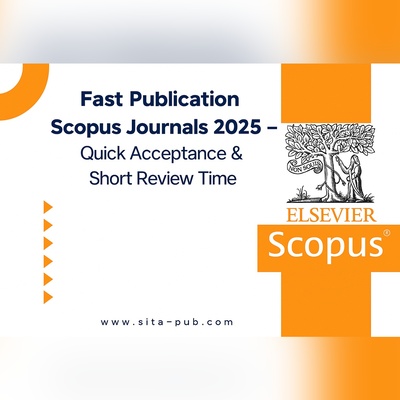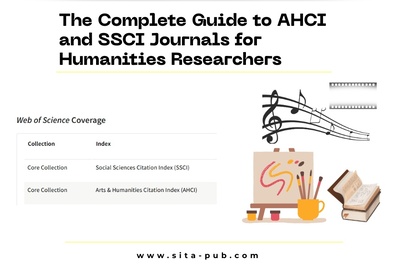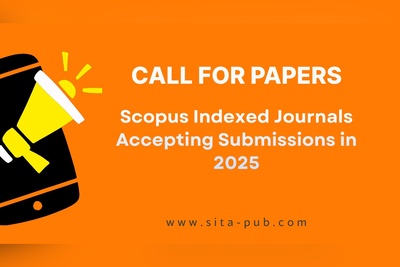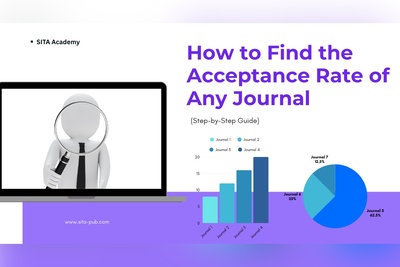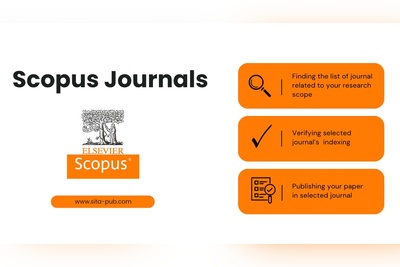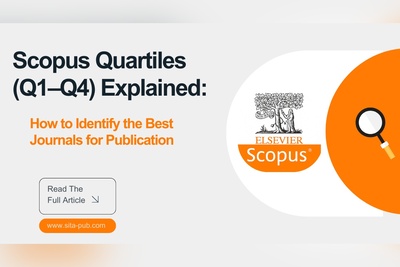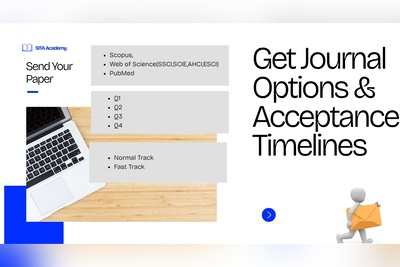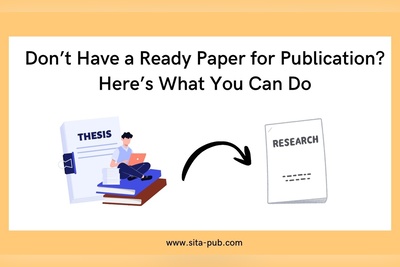Get Publication-Ready Fast: SITA’s Journal Selection & Editing Support for Faculty Applicants
Learn how faculty members can get published in international journals for promotion in 2025. Understand publication requirements, sanctioned periodicals, co-authorship rules, fast-track journals.
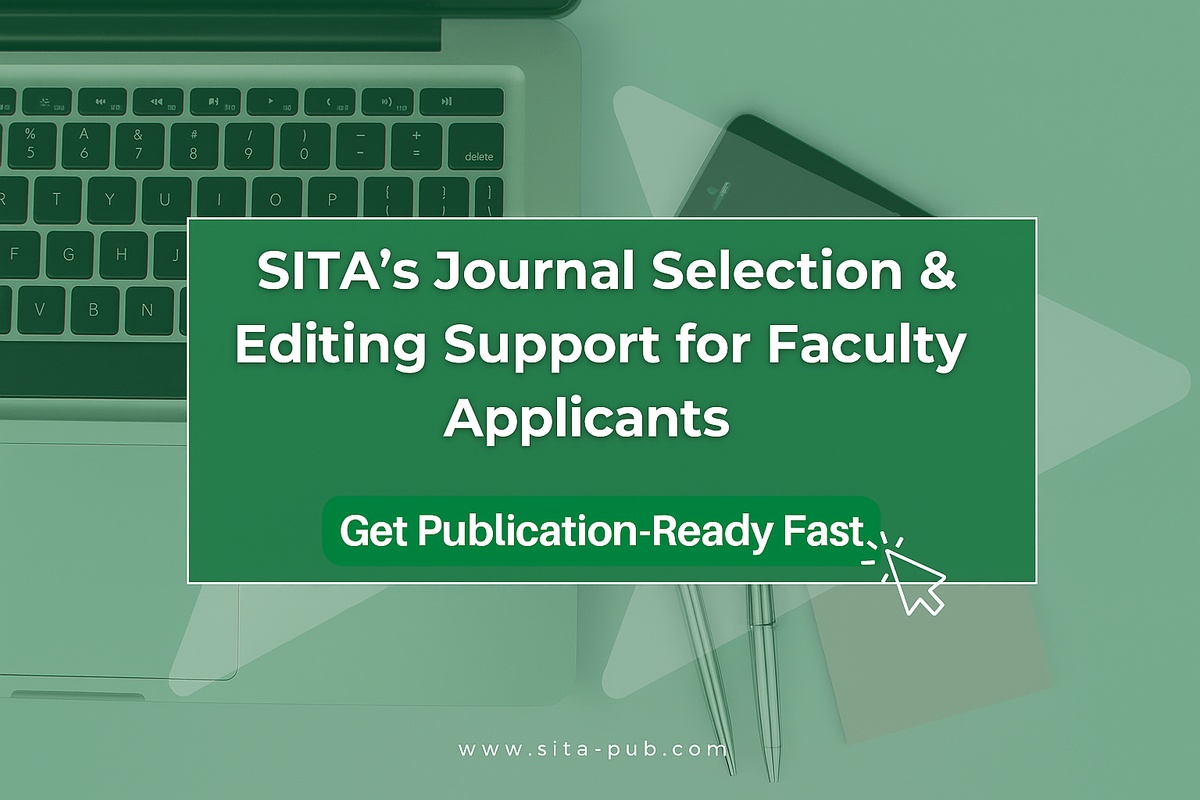
Faculty promotion is a major milestone in an academic career, and research publications play a central role in qualifying for higher ranks. One key aspect that often confuses academics is the term “sanctioned periodicals” and how it affects their promotion. Many faculty members wonder, “Do only articles in sanctioned periodicals count for faculty promotions?” or “How many publications are required for assistant, associate, or full professor?”
In this article, we will provide a complete guide on research publications for faculty promotions in 2025, explain what sanctioned periodicals are, how to select the right journals, and how professional support can make the publication process faster and easier.
Understanding Sanctioned Periodicals
One of the most common statement that faculty members members see is:
“Only articles in sanctioned periodicals count for faculty promotions”
Sanctioned periodicals are journals officially recognized by universities, government agencies, or accrediting bodies for evaluating faculty research. This ensures that only credible, peer-reviewed, and indexed journals are considered during promotion evaluations.
Why it matters: Publishing in any random journal may not contribute to promotion eligibility. Universities and institutions often maintain a list of approved journals that are considered sanctioned periodicals.
Databases involved: Typically, journals indexed in Scopus, Web of Science (WOS), PubMed, or other recognized databases are counted as sanctioned.
Tip: Always check your institution’s promotion guidelines or sanctioned journal list before submitting your research.
How Many Publications Are Required for Faculty Promotion?
Another top concern for faculty members is understanding the number of research papers required for promotion. They may wonder:
“How many publications for assistant professor?”
“How many publications to become a professor?”
“How many publications for associate professor?”
“How many research papers are required for assistant professor or tenure?”

Key insights:
There is no universal number, but institutions usually require a combination of peer-reviewed journal articles.
Typically:
Assistant Professor: 2–5 research papers in sanctioned journals.
Associate Professor: 5–10 papers in recognized periodicals, with at least some in high-impact journals.
Full Professor: 10+ publications, preferably in top-tier sanctioned journals.
Role of authorship: Faculty often want to know if co-authored papers count toward their promotion. The answer is yes: contributions as a co-author, second author, or third author are usually counted, provided the journal is sanctioned and the contribution is clearly documented.
Choosing the Right Journals for Faculty Publications
Selecting the correct journal is crucial because it affects whether your research will count for promotion. Many faculty members struggle with this step. Here’s a practical guide:
Check Indexing
Ensure the journal is indexed in recognized databases:
Scopus
Web of Science (WOS)
PubMed (for medical and life sciences)
Verify Journal Status
Use your university’s sanctioned journal list.
Cross-check the journal’s website and indexing claims. Avoid journals that falsely claim indexing.
Decide on Open Access vs Subscription
Open Access: Journals are freely available online. May involve article processing charges (APCs).
Subscription Journals: Readers require access via subscription. Often no publication fee, but visibility is limited.
Consider Publication Timeline
Faculty members often ask: “Which journals have fast publication for promotion purposes?” Fast-track journals can help meet tenure deadlines or promotion evaluations.
Preparing Your Research Paper for Journal Submission
Once you’ve identified sanctioned journals, the next step is to make your paper publication-ready. Key steps include:
Follow the Journal’s Guidelines
Formatting style (APA, IEEE, etc.)
Word count, figures, tables, and references
Optimize Your Manuscript for Acceptance
Clear, concise abstract highlighting key findings
Well-structured introduction showing research gap
Methods and results focused on the main research question
Discussion emphasizing significance and contribution to the field
Professional Support Can Help
Many faculty search for guidance or support. If they want expert help to submit their papers successfully. Services like SITA Academy can help:
Journal recommendation based on sanctioned lists
Formatting, editing, and plagiarism checks
End-to-end submission support
This ensures your research is ready for rapid acceptance in sanctioned journals.
Common Questions About Faculty Publications
Q1: Do only articles in sanctioned periodicals count for promotion?
A: Yes, universities mandate that only publications in recognized, peer-reviewed, and indexed journals are counted. Always verify with your institution.
Q2: Can co-authored papers count toward my promotion?
A: Yes. Being a second, third, or co-author is acceptable, provided your contribution is documented and the journal is sanctioned.
Q3: How many publications do I need for assistant or associate professor?
A: Generally, 2–5 for assistant, 5–10 for associate, and 10+ for full professor. Exact numbers vary by institution.
Q4: Are there journals that publish faster for faculty promotions?
A: Yes. Many Scopus or WOS-indexed journals offer fast-track options, but always ensure they are sanctioned.
Q5: Can I publish in open access journals for promotion?
A: Yes, as long as the journal is recognized and indexed. Some open access journals have APCs, while some subscription-based journals are free.
Q6: How to verify if a journal is sanctioned?
A: Check your university’s list, or use trusted databases like Scopus, WOS, or PubMed to confirm indexing and credibility.
How SITA Academy Can Help
Faculty often need guidance on publishing in sanctioned journals to meet promotion criteria. SITA Academy offers end-to-end support for faculty and researchers:
Suggest suitable journals based on sanctioned lists and promotion requirements
Professional editing and formatting to meet journal standards
Submission and follow-up support for smooth publication
Conclusion
Publishing in sanctioned journals is critical for faculty promotions in 2025. Key takeaways:
Focus only on peer-reviewed, indexed journals recognized by your institution.
Ensure you understand how many publications are required for your rank.
Consider fast-track journals if deadlines are tight.
Verified Contact Channels
If you have any questions, inquiries, or would like to learn more about our services, please don't hesitate to reach out to us. Our dedicated team is ready to assist you.
